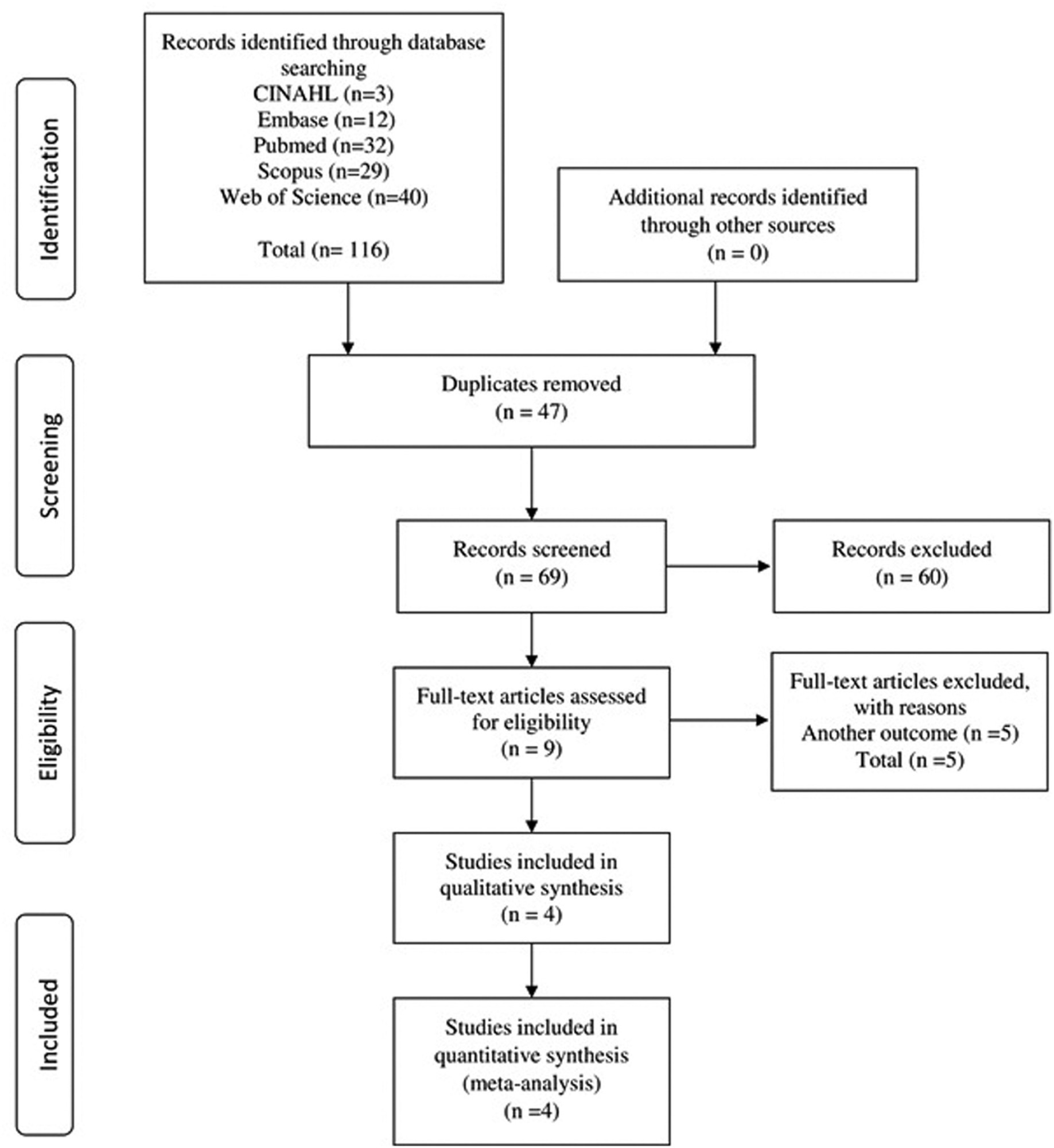Summary
Revista Brasileira de Ginecologia e Obstetrícia. 2023;45(10):609-619
12-11-2023
To investigate the clinicopathological significance and prognosis of the expression of the anterior gradient 3 (AGR3) protein in women with breast cancer.
The PubMed, CINAHL, EMBASE, Scopus, and Web of Science databases were searched for studies published in English and without restrictions regarding the year of publication. The search terms were: breast cancer AND anterior gradient 3 OR AGR3 expression.
We included observational or interventional studies, studies on AGR3 protein expression by immunohistochemistry, and studies on invasive breast cancer. Case reports, studies with animals, and reviews were excluded. In total, 4 studies were included, containing 713 cases of breast cancer.
Data were extracted on clinicopathological characteristics and survival. A meta-analysis of the prevalence of AGR3 expression was performed according to the clinicopathological characteristics, hazard ratios (HRs), and overall survival and disease-free survival.
The expression of AGR3 was found in 62% of the cases, and it was associated with histological grade II, positivity of estrogen and progesterone receptors, low expression of ki67, recurrence or distant metastasis, and lumen subtypes. In patients with low and intermediate histological grades, AGR3 expression was associated with worse overall survival (HR: 2.39; 95% confidence interval [95%CI]: 0.628–4.159; p = 0.008) and worse disease-free survival (HR: 3.856; 95%CI: 1.026–6.686; p = 0.008).
The AGR3 protein may be a biomarker for the early detection of breast cancer and predict prognosis in luminal subtypes. In addition, in patients with low and intermediate histological grades, AGR3 protein expression may indicate an unfavorable prognosis in relation to survival.

Summary
Revista Brasileira de Ginecologia e Obstetrícia. 2021;43(1):41-45
03-08-2021
The aim of the present study was to analyze relapse rates and patterns in patients with endometrial cancer with the aim of evaluating the effectiveness of current follow-up procedures in terms of patient survival, as well as the convenience of modifying the surveillance strategy.
Retrospective descriptive study including all patients diagnosed with endometrial cancer relapse at the Department of Gynecology and Obstetrics of the Complejo Hospitalario Insular-Materno Infantil de Canarias, between 2005 and 2014.
Recurrence was observed in 81 patients (10.04% of the sample); 66.7% of them suffered relapse within 2 years and 80.2% within 3 years after the termination of the primary treatment; 41.9% showed distant metastases while the rest corresponded to local-regional (40.7%) or ganglionar (17.4%) relapse; 42% of these were symptomatic; 14 patients showed more than 1 site of relapse. Relapse was detected mainly through symptoms and physical examination findings (54.3%), followed by elevated serummarker levels (29.6%), computed tomography (CT) images (9.9%) and abnormal vaginal cytology findings (6.2%). No differences in global survival were found between patients with symptomatic or asymptomatic relapse.
Taking into account that the recurrence rate of endometrial cancer is low, that relapse occurs mainly within the first 3 years post-treatment and that symptom evaluation and physical examination are the most effective follow-up methods, we postulate that a modification of the current model of hospital follow-up should be considered.